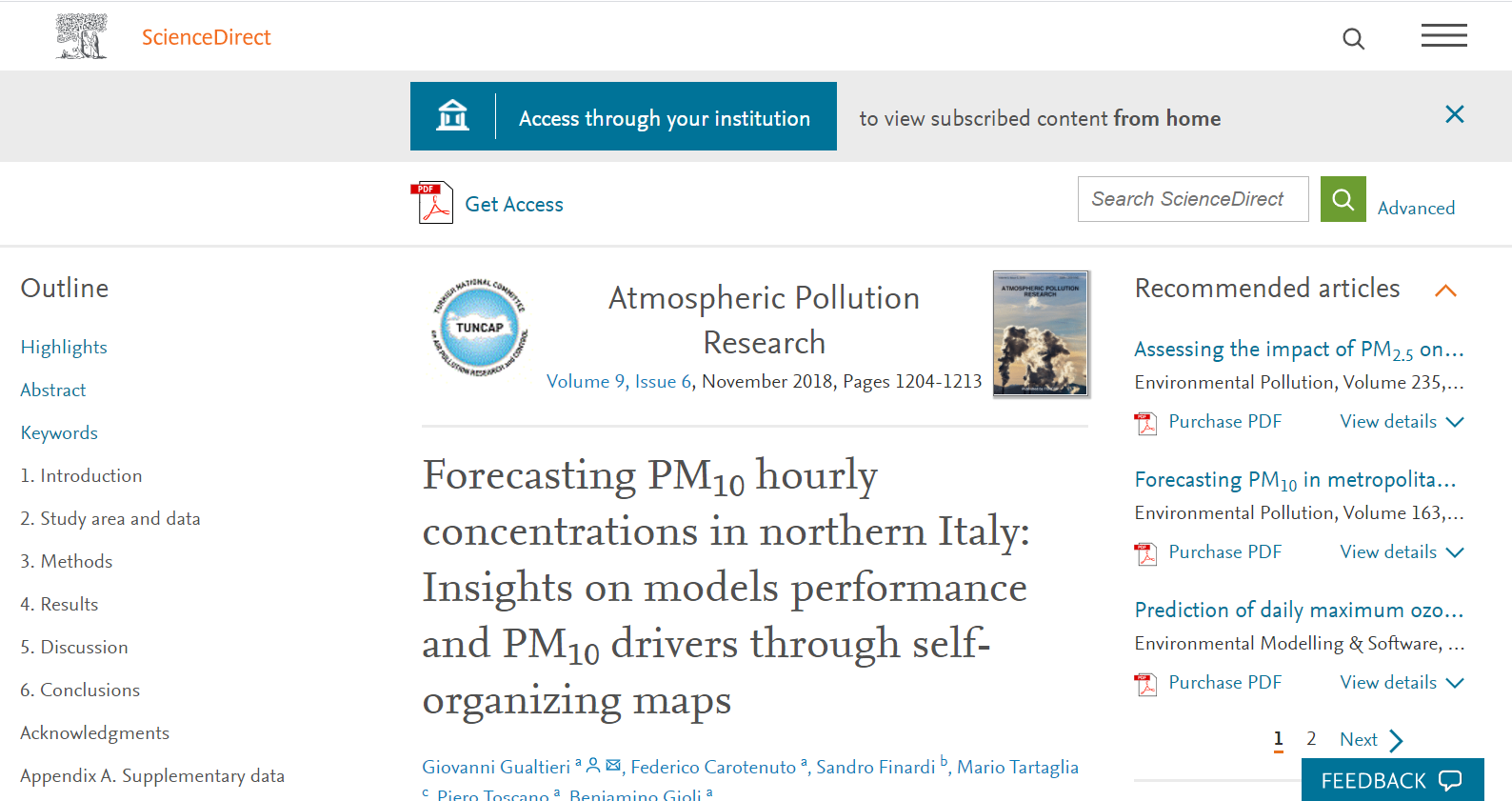A linear and an artificial neural network (ANN) statistical model have been developed and validated for short-term forecasting of PM10 hourly concentrations in the city of Brescia (Italy). PM10 observed concentrations were biased by less than 1% by each model, though the ANN outperformed the linear model, as exhibiting NRMSE of 0.48 vs. 0.53, and r2 of 0.57 vs. 0.48. The self-organizing maps (SOMs) showed that both models predictions exhibit the same clustering as the observations, with the ANN at worst capable of under-estimating clustered PM10 peak concentrations by 5.8 μg/m3.
In Brescia, PM10 most critical conditions were detected in wintertime in the early morning or late afternoon under unfavourable meteorological conditions, i.e. reduced advection enhancing PM10 stagnation, and lack of precipitations capable of reducing PM10 resuspension. Under these conditions, PM10 accumulation is driven by local anthropogenic emissions ascribing to two main sources: heating plants, responsible of emissions of primary PM10 (mostly PM2.5, likely resulting from wood and biomass burning); and road traffic (basically diesel vehicles), mainly responsible of emissions of secondary PM10 precursors (mostly NOx), and secondly of primary PM10 emissions.
The SOM analysis clearly indicated that PM10 most critical conditions are driven by the secondary rather primary PM10 component.
